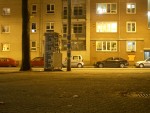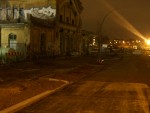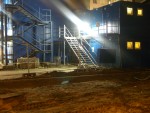In the IDSA Innovations magazine there's a story by Scott Henderson describing his salad bowl and forks. It's a gorgeous product and a wonderful design, but Henderson devotes a full paragraph describing why it's ecologically sensitive because it's expensive. I find that pretty ridiculous, and it raises all kinds of questions for me, but rather than rant about it, as I'd like to, I'll just reprint it in its entirety:
When designers try to defend their work from an ecological standpoint, they are often forced to search for some spin about the product's material being recyclable. Hence, "the Ensalada is primarily constructed from glass, a natural material that is recyclable and regarded by many as a manufactured material, the use of which is critical to human health and safety because of its ecological properties."All true actually, but the real reason the Ensalada is an environmentally sound product has its basis in something far less scientific--money! The high-end nature of this product contributes to its position as a protector of the environment. It is not a product intended to compete on price, rather it is a special piece that will be displayed with pride and used with care for many years.
Quality is perhaps the factor in the world of design that best protects our environment. The esteemed timepiece company, Patek Phillipe of Switzerland, for example, sells watches for tens of thousands of dollars, in some cases. This successful business is based on the idea that once you own a Patek, you not only own it for life but your children's children also own it because of its extreme quality. The environment will not be damaged on their watch. The Ensalada has a similar goal: to be valued enough by its owners to be passed along to future generations.
OK, maybe I'll rant a bit: so we are absolved from our responsibility for designing ecological products when we make them really expensive. Huh? And since when is the role of a salad bowl to be handed down from generation to generation? It's a day-to-day functional object, and should be designed as such. Quality does not equate to price, and it certainly doesn't equate to protecting our environment. There are lots and lots of high quality excellently designed products that are ecologically unsound (the Coca Cola plastic bottle, perhaps?). Patek Phillipe is a brand based on elitism: do you think that buyers are actually passing those watches down to keep them out of landfills, or is that from an ad campaign designed to help affluent people convince themselves that they need something that is much, much more expensive than any functionality it can possibly deliver?
Environment awareness and long-term thinking are important, maybe even critical, aspects of design. But justifying environmentalism through elitism masked as quality is cynical and ultimately unhelpful.















Recent Comments